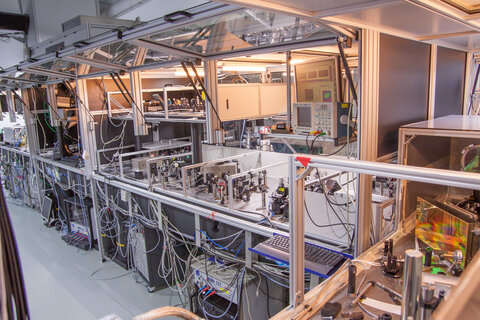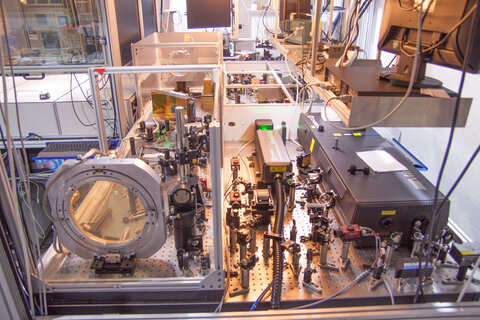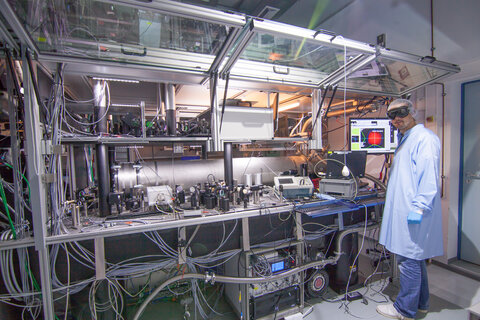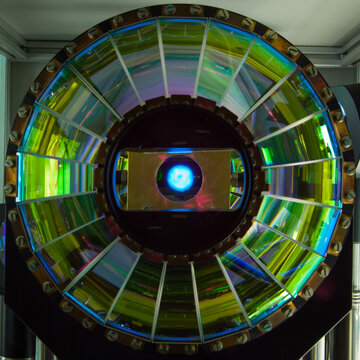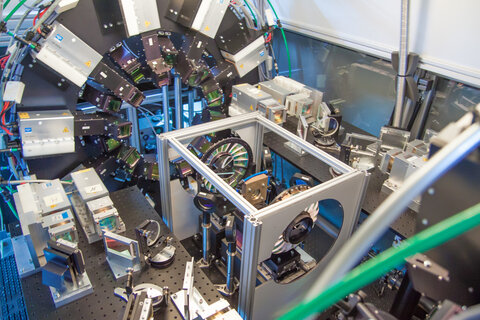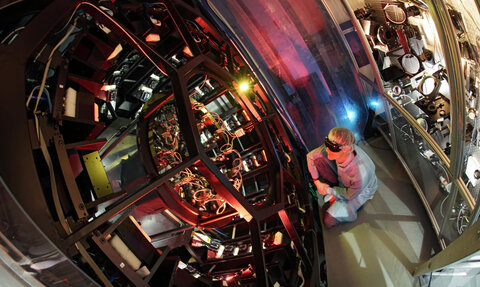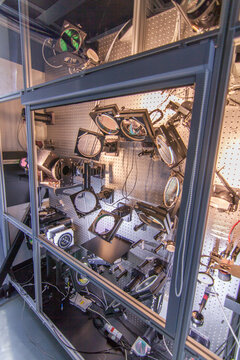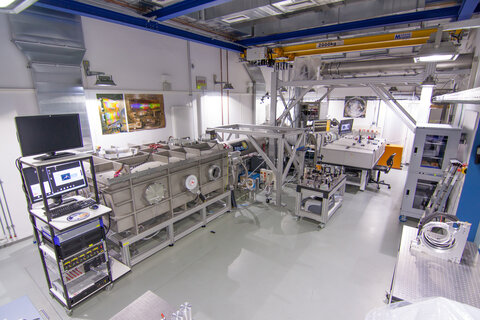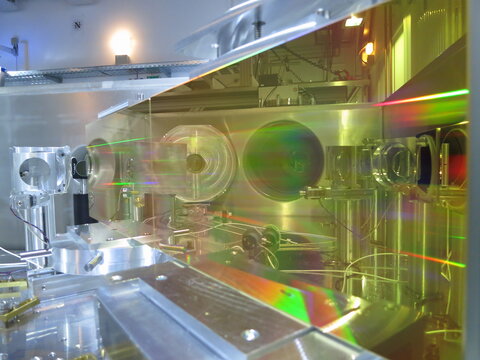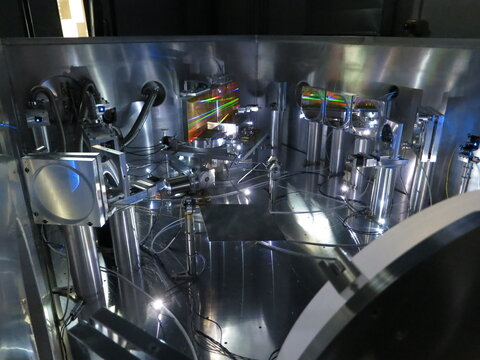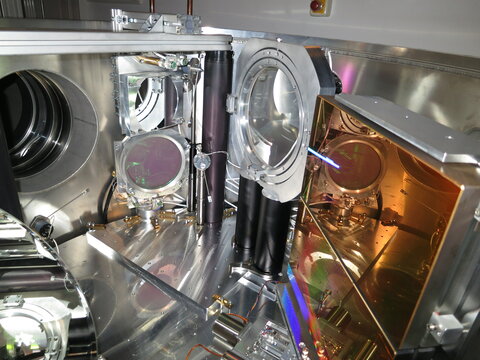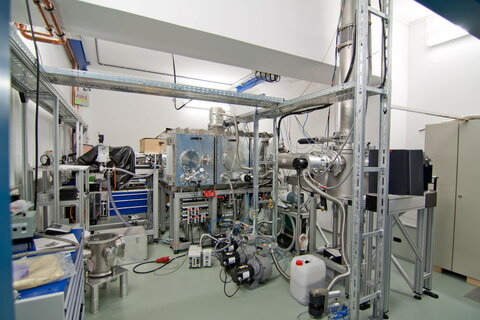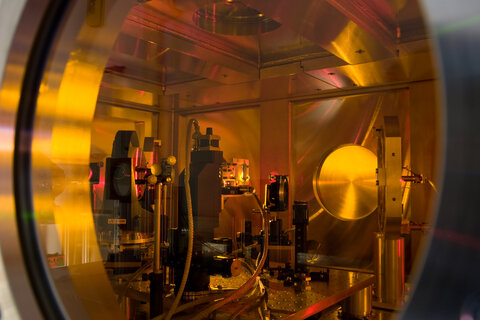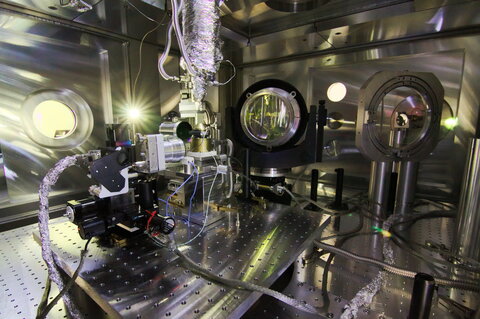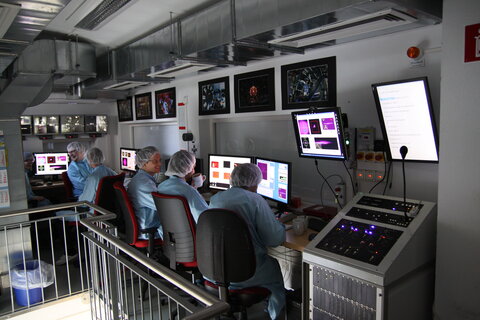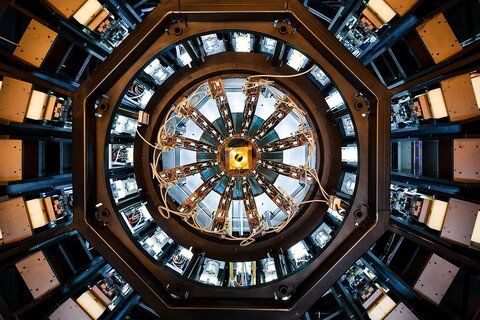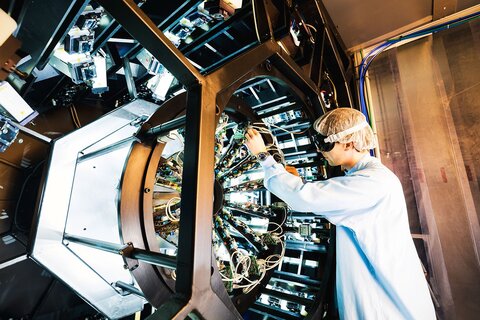POLARIS Laser
POLARIS – Petawatt Optical Laser Amplifier for Radiation Intensive ExperimentS
POLARIS is currently the world’s only fully diode-pumped laser system generating pulses with a peak power of 200 TW which can be used for high-intensity experiments. Using POLARIS, experiments for laser particle acceleration are carried out at HI-Jena.
The POLARIS system is built within a lab of 250 m2. The laser pulses are generated using an oscillator, temporally stretched in a grating stretcher, then amplified in energy by more than 10 orders of magnitude before they are temporally compressed again. Finally the pulses are focused in the target area to a µm-diameter focal spot using a parabolic mirror to be available for high-intensity experiments.
To efficiently amplify pulses having a duration of 100 fs only, POLARIS uses the technique of chirped pulse amplification (CPA). In addition to five power amplifiers POLARIS is equipped with a stretcher—compressor combination which uses a tiled-grating array within the compressor. Yb-doped fluoride phosphate glass and CaF2 are used as the active medium which is pumped by 940 nm light emitted from high-power pump diode stacks. The glass has been specially developed for POLARIS by the Otto Schott Institute in Jena. POLARIS generates laser pulses having a central wavelength of 1030 nm and a bandwidth of 19 nm (FWHM). To allow for an efficient cooling of the active material between subsequent laser shots, the pulses are generated at a repetition rate of 1/50 Hz.
Currently, POLARIS produces laser pulses delivering an energy of 54.16 J before compressor and more than 17 J within a pulse duration below 100 fs on target. These pulses can be used for experiments on a daily basis. Using an adaptive optics system intensities in excess of 1021 W/cm2 are reached in the laser focus. The temporal intensity contrast of the amplified and compressed pulses is of the order of 10-13 for the amplified spontaneous emission (ASE). Both a further enhancement of the intensity contrast and an increase of the available pulse energy are currently subject of improvement.
The research leading to these results is partly funded by the German Federal Ministry of Education and Research (BMBF) under contracts 03ZIK052, 03ZIK445, 05K10SJ2, 03Z1H531, the German Research Foundation (TR18), the European Research Council under the European Union’s Seventh Framework Programme (LASERLAB-EUROPE, no. 228334), and the Thuringian Ministry for Economy, Labour, and Technology (TMWAT, Project no. 2011 FGR 0122).
Contact:
Relevant Publicationens:
H. Liebetrau et al., Opt. Lett. 42, 326 (2017)
M. Hornung et al., Opt. Lett. 41, 5413 (2016)
S. Keppler et al., Opt. Lett. 41, 4708 (2016)
S. Keppler et al., Laser Photon. Rev. 10, 264 (2016)
H. Liebetrau et al., Opt. Express 22, 24776 (2014)
M. Hornung et al., HPLaser 2, e20 (2014)
